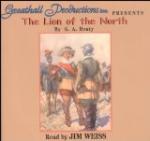Gustavus proposed to move forward at two o’clock in the morning; but fate was upon this occasion against the great Swedish leader. Just as on the previous day the expected length of the march and the heavy state of the roads had prevented him from crushing Wallenstein’s scattered army, so now a thick fog springing up, making the night so dark that a soldier could not see the man standing next to him, prevented the possibility of movement, and instead of marching at two o’clock in the morning it was nine before the sun cleared away the fog sufficiently to enable the army to advance. Then, after addressing a few stirring words to his men, Gustavus ordered the advance towards Chursitz, the village in front of them.
The king himself led the right wing, consisting of six regiments of Swedes, supported by musketeers intermingled with cavalry. The left, composed of cavalry and infantry intermixed, was commanded by Duke Bernhard. The centre, consisting of four brigades of infantry supported by the Scottish regiments under Henderson, was commanded by Nicholas Brahe, Count of Weissenburg.
The reserves behind each of these divisions were formed entirely of cavalry, commanded on the right by Bulach, in the centre by Kniphausen, and on the left by Ernest, Prince of Anhalt. The field pieces, twenty in number, were disposed to the best advantage between the wings. Franz Albert of Lauenburg, who had joined the army the day before, rode by the king. A short halt was made at Chursitz, where the baggage was left behind, and the army then advanced against the Imperialists, who at once opened fire.
Wallenstein had posted his left so as to be covered by a canal, while his right was protected by the village of Lutzen. On some rising ground to the left of that village, where there were several windmills, he planted fourteen small pieces of cannon, while to support his front, which was composed of the musketeers in the ditches on either side of the road, he planted a battery of seven heavy pieces of artillery.
The main body of his infantry he formed into four massive brigades, which were flanked on both sides by musketeers intermixed with cavalry. Count Coloredo commanded on the left, Holk on the right, Terzky in the centre.
As the Swedish army advanced beyond Chursitz the seven heavy pieces of artillery on the side of the road opened upon them, doing much execution, while their own lighter guns could not reply effectively. The Swedes pressed forward to come to close quarters. The left wing, led by Duke Bernhard, was the first to arrive upon the scene of action. Gallantly led by the duke his men forced the ditches, cleared the road, charged the deadly battery, killed or drove away the gunners, and rushed with fury on the Imperialist right.
Holk, a resolute commander, tried in vain to stem the assault; the ardour of the Swedes was irresistible, and they scattered, one after the other, his three brigades. The battle seemed already lost when Wallenstein himself took his place at the head of the fourth brigade, and fell upon the Swedes, who were disordered by the rapidity and ardour of their charge, while at the same moment he launched three regiments of cavalry on their flanks.




